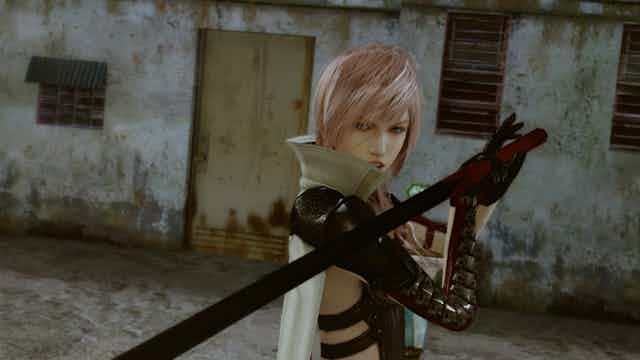Video games are played by nearly three billion people worldwide and make more money annually than the film industry. Around 50% of gamers are female but gaming has chronic problems with gender bias.
Female players have recounted receiving sexist abuse online and there have been claims of gender discrimination in video-game development. Let’s not forget “Gamergate”, the year-long campaign of harassment between 2014 and 2015 of prominent female gamers and developers.
The results of the biggest-ever study of video game dialogue, reveal another stark gender imbalance in the industry. Our analysis, published in the Royal Society Open Science today studied over 13,000 video game characters and found that twice as much dialogue is given to male characters than to female characters.
At least some of the burden for change rests on the content of video games themselves. Games are more likely to have male protagonists than female and many games constrain women to stereotypical roles – Princess Peach, for instance, is often the damsel in distress.
Studying dialogue is one way of gaining insight into patterns of gender bias. Previous studies have shown that most films and TV shows give more dialogue to male characters. Creating the largest-ever open-source database of video-game dialogue, we found video games are no different.
Our study of 13,000 characters from 50 video games found that video games include twice as much male as female dialogue on average. Secondly, 94% of games we analysed had more male dialogue than female dialogue, including games with multiple female protagonists (e.g. Final Fantasy X-2, King’s Quest VII). The exceptions were King’s Quest games from the 1980s and Final Fantasy XIII: Lightning Returns, which has a female protagonist but still manages only 55% female dialogue.
However, the bias wasn’t just with protagonists – we found the same imbalances in minor characters. The pattern persisted even when taking into account player choices about a protagonist’s gender and optional dialogue.
The proportion of female dialogue is slowly increasing. Even so, we also found that female characters are more likely to apologise, hesitate or be polite, perpetuating stereotypes about gendered behaviour.
Finally, while the results reported here concern male and female characters, we were interested in the dialogue distribution for all genders. Unfortunately, we couldn’t run reliable analyses on non-binary and other genders since there were so few characters in these categories, which is itself revealing.
Quest for data
We were inspired by a study of gender balance in Disney film dialogue, showing that men had more dialogue than women in 88% of films. This simple statistic was a striking demonstration of a systematic imbalance. We wanted to measure this statistic for games but quickly discovered several challenges.
First, which games to include? We selected 50 role-playing games where dialogue is crucial. These were balanced across sub-genre, target audience age, and year of publication. They included games from major developers – Final Fantasy, Persona, Mass Effect, The Elder Scrolls – and games from smaller developers such as Monkey Island and Stardew Valley.
Accessing the data was harder than anticipated. Some games have accessible scripts, others needed to be hunted down. For many, we relied on fan transcripts, though we needed to make over 20,000 manual corrections. Even when game code was available, converting it to a script could be an epic side-quest of its own. Games from the Elder Scrolls or Dragon Age series can contain 1,000 characters speaking half a million words. We wrote more than 10,000 lines of code to process the data.
Finally, identifying the gender of 13,000 characters was not always straightforward. How should we code characters in disguise? What gender is a talking book? What about a “guard” who appears for just one line of dialogue?
We coded for conferred gender: a character’s gender as likely to be experienced by a typical player. This took meticulous research, scouring “lets-play” videos (videos of people playing the games), fan wikis, and discussion boards for clues.
How can game-makers address the imbalance?
First, developers can monitor the distribution of dialogue, using our findings to determine how their games compare with others.
Secondly, we found that the average male character doesn’t say more than the average female character. The overall imbalance is driven by there being twice as many male characters as female characters. So a key strategy would be simply to increase the proportion of female characters, major and minor.
There’s an important caveat here: more dialogue doesn’t guarantee better gender representation. In the recent remake of Final Fantasy VII, the female character Jessie has ten times more dialogue than in the original. However, most of it is spent flirting with the main character.
Another approach is “gender-flipping” – writing characters as one gender and then changing them during development, as with Fang from Final Fantasy XIII who started male and ended female.
There’s more work to do here, not least studying non-binary characters, and harmful male behaviour stereotypes (for example, dangerous work always being assigned to men). Our resources are open-source, and we hope that gamers, programmers and other academics will contribute to the expansion of the database.


